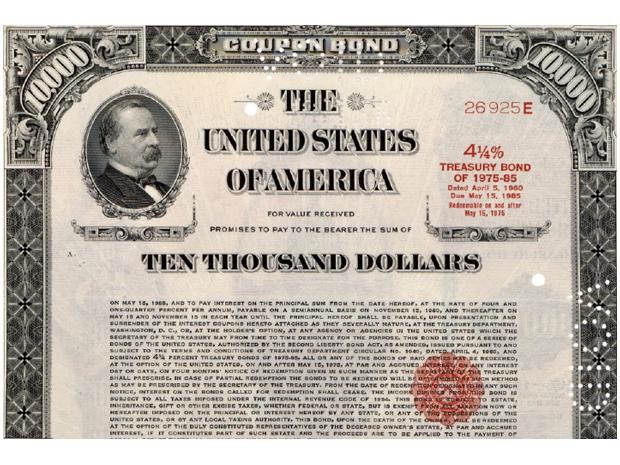CIO of Arca Funds. Responsible for portfolio management and analysis. Previously, Mr. McClurg was Managing Director at Guggenheim Partners as a portfolio manager and a member of the Portfolio Construction Group, where he was responsible for portfolio construction and strategy for $120 billion in fixed-income, private equity, and quant strategies. Additionally, he created and structured products for esoteric securities.
The FOMC, Inverted Yield Curves & Digital Assets
Arca Macro Commentary June 12, 2018
Investing is an activity of forecasting the yield over the life of the asset; speculation is the activity of forecasting the psychology of the market.
– John Maynard Keynes
June Fed Meeting
This week’s Fed meeting will likely yield the second hike this year, to a target of 1.75 to 2.00. As the economy hums along at full employment, the Fed is currently focusing on controlling inflation. With May’s 2.8% increase in inflation, not only do I expect the Fed to urgently use the June meeting to hike rates, but we should also expect two additional rate hikes this year. This would bring the total to four for 2018 (versus the consensus view of a total of only three rate hikes in 2018). Other data that serves this view is
higher oil (as mentioned in previous commentary)
, as well as the potential for other goods to increase in price due to new tariffs.
Macro Trends and Rates
The current Fed is more hawkish and has a greater fear of inflation than in the Bernanke and Yellen years, as they have already raised their target rate to 1.75 in March vs 1.00 a year prior. After this month’s move, the 10 year Treasury yield should push back above 3.1%, from 2.96% now, marking the end of the 35 year bull market in bonds. There are no market factors that would push 30 yr Treasury yields too much higher from where it is today at 3.09%, given higher duration risk versus only less than a quarter of yield upside versus the 10 year. The Treasury curve should flatten more this year, and possibly invert in 2019.
Continued Dovishness on Global Rates
The Bund(0.49), Gilt(1.4) and JGB(0.05) yields continue to remain low; UK and Japan are still committed to quantitative easing, with the EU looking at ways to begin to work themselves out without decimating Greece and Italy. Once we get past the 3rd Fed rate hike this year, which is the consensus, we should see flows move out of EU, UK, and Japan currencies and rates, and into US bonds, at a higher rate. I don’t expect flows to move into the longer end of the curve, but rather into the 2-5 year area of the curve given much lower duration while only giving up 15 bps of yield for being in 5 year vs 10 year treasuries. This trade could push the long end of the curve down significantly, flattening to the short end of the curve. Markets typically look at spread between the 10 year government benchmarks for relative value. But given the tight spread between 5 and 10 year and flat curve relative to the last 10 year, generic 5 year government bonds should be where we focus. Hence, 5 year US Treasuries at current 2.81% are much more attractive to investors than 1.11% 5 year Gilts, -0.14% Bunds, and -0.1% JGBs. Given potential short supply of 5 years, the trades will go into 10 year Bonds as well for continued curve pressure.
Trade War
That movement out of Euro, Pound, and Yen coupled with a potential trade war is fuel to pivot the economy out of the 10 year bull market, creating a recession some time late in 2019. Weak consumer confidence in Q4 would produce undesirable consumer spending, causing a larger economic pullback in 2020, hence a longer recessionary period.
Defensive Positioning
Despite the recent slump in equities, they should continue to perform for the next 18 months, however, it may be wise to start rotating into defensive and dividend-paying stocks.
Below investment grade bonds should not be owned given tight spreads and likely rising default rates, which I believe will go from 2% to 8-9%
. Government backed Mortgage Backed Securities, particularly floating rate, make more sense over Treasuries and corporates right now. Commodities and alternative investments are also a good protective measure at this point in time.
Digital Assets
We experienced high consumer confidence in the second half of 2017, which encouraged retail investors towards a risk-taking mentality leading to massive Coinbase and Gemini signups and driving the price of BTC and ETH higher. Consumer confidence and demand for risk should continue this year, so I expect more retail buyers coming into the cryptocurrency markets in the second half of 2018.
Institutional money will be another driver of price in the second half of 2018. Over the past 5 months, Cryptocurrency prices have come down quite a bit and are experiencing consolidation. The prices are much more desirable for new money and cash that has been on the sidelines, especially as other asset prices such as equities continue to get expensive.
Additionally, most of the real money investors in the crypto markets have only experienced a bull market. Very few crypto investors were in the market prior to Mt Gox, so the recent Korean exchange hacks have come as a surprise. However, as the shock that drove Bitcoin and other Digital Assets lower over the weekend subsides, a base will begin to form for digital assets to move higher.
Digital Assets and public market securities, as well as other risk assets, are becoming more correlated with retail investors and institutional investors participating. Risk-on and Risk-off trades should begin to have a more profound effect on digital asset prices.



